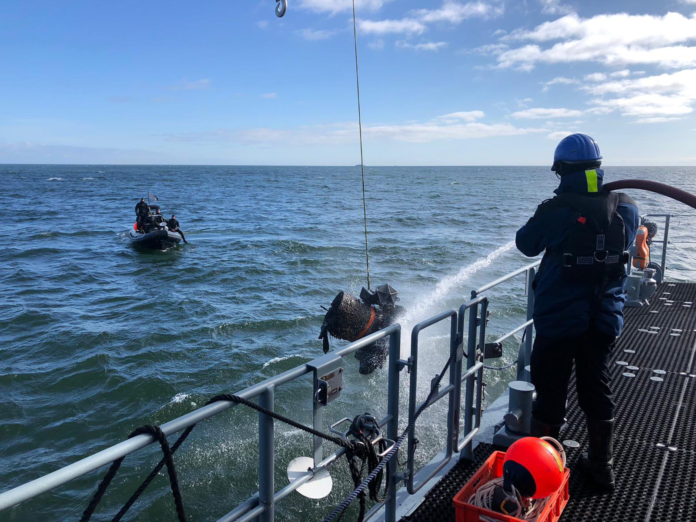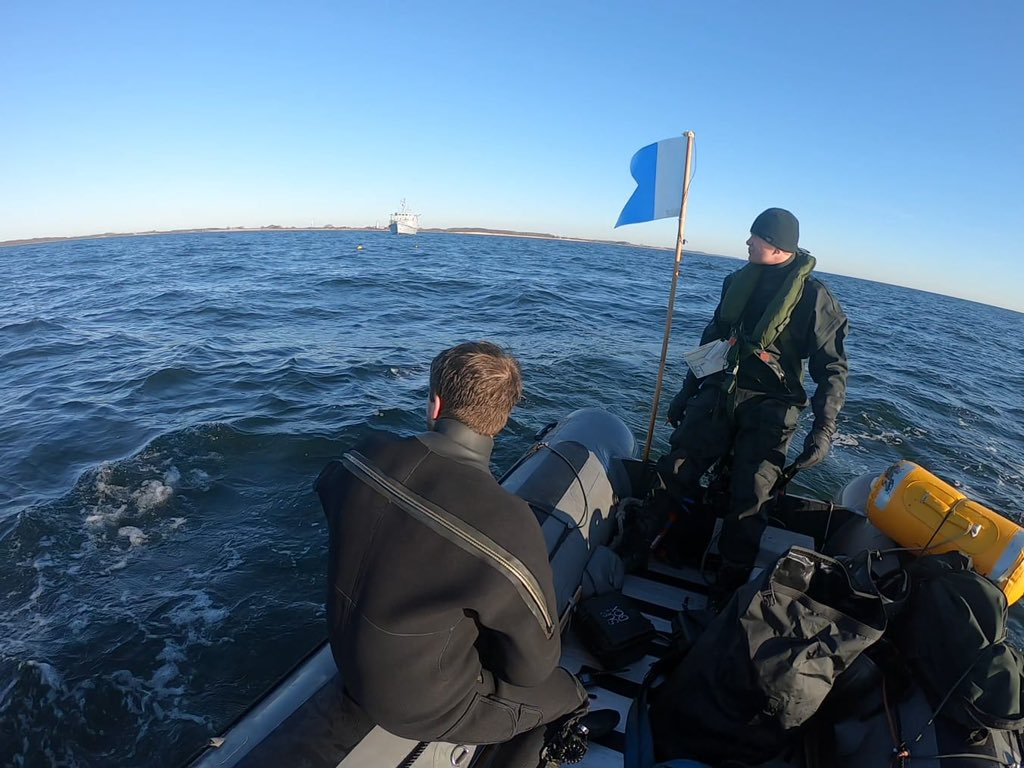
Standing NATO Mine Countermeasures Group One (SNMCMG1) conducted Historical Ordnance Disposal Operations (HODOPS) in the Danish waters near the coast of Lolland and Langeland 3-11 March 2021.
During the operation, FGS Datteln identified two 1930s underwater ordnance mine chairs and recovered one of them for closer inspection, and as a learning opportunity for the crew. A few days later, FGS Datteln and ENS Ugandi identified further 49 historical mine chairs in a close-by sequence, allowing to conclude that there is still a significant amount of mines left in this area of the Baltic Sea from the two world wars.
“By finding so many mine chairs we confirmed the position of a historical mine line. It remains important to verify they are there to allow fishermen and all maritime actors to have enough information to be able to conduct safe operations. We made it even safer by getting rid of some historical ordnance which was still a danger,” said Commander of SNMCMG1, Commander Jan Wijchers (Royal Netherlands Navy).

To locate the maximum amount of objects, Allied units need to operate in close proximity. The objects are then further identified by divers or remotely operated underwater drones. All the data collected has been passed on to the Danish authorities.
Together SNMCMG1 covered an area of 20 square nautical miles and identified 6 historical ordnance, including four sea mines and one torpedo body without a warhead. Of them, two sea mines were disposed and the rest were passed on to national authorities for further action and mapping. All historical ordnance disposal activities were executed in close coordination and consent of the Danish authorities.
The objective of the operation is to reduce risk posed by sea mines to maritime communities and traffic of the Baltic Sea, as well as provide enhanced training in mine countermeasures operations to SNMCMG1 participating units.
During the operation, SNMCMG1 consisted of the flagship Dutch-led BNS Godetia (Belgium) and mine countermeasures vessels BNS Lobelia (Belgium), ENS Ugandi (Estonia), FGS Datteln (Germany) and HMS Blyth (United Kingdom).
After the completion of the Historical Ordance Disposal Operations, SNMCMG1 visited the Naval Base in Kiel, Germany for rest and re-supply.
Before entering Kiel, SNMCMG1 conducted a ceremonial steam-past to say goodbye to the Belgian minehunter Lobelia, a ship that was deployed with the Group for more than two months. She is currently underway to her homeport Zeebrugge.
Standing NATO Mine Countermeasures Group One will now proceed to Sweden, exercising with the German Navy on the way and culminating in a port visit to Karlskrona at the end of this week.
Check out Naval Library App to find out the specifications of the SNMCMG1 Ships.


